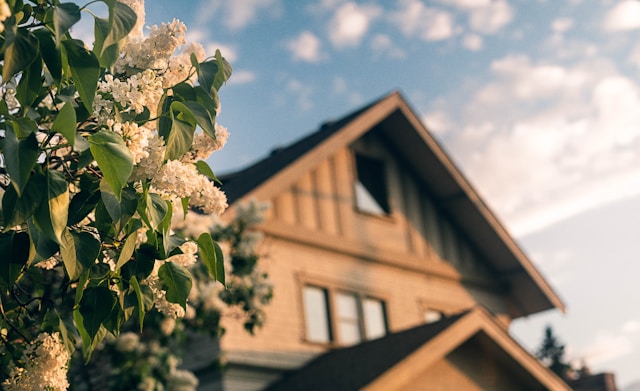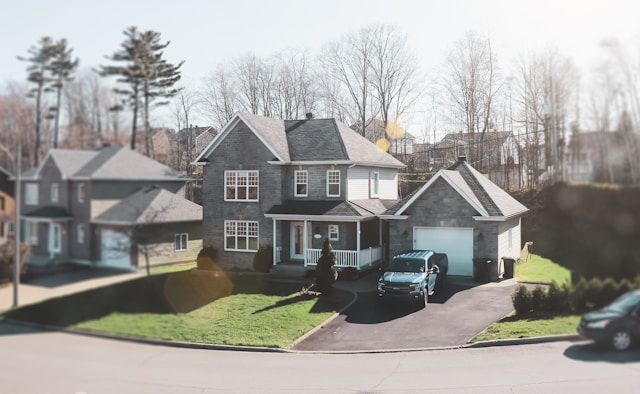
If you’ve spotted green, black, or gray patches appearing on your home’s siding, roof, or gutters, you’re definitely not alone. These common growths not only diminish your home’s curb appeal but can also lead to damage if neglected. But what exactly is this “green stuff”? Is it algae, mildew, or mold? And how can you safely get rid of it?
For a thorough and professional solution, consider services like power washing in Richmond to keep your property looking its best. The following article highlights the differences between algae, mildew, and mold, explain why they develop on homes, and share safe, effective cleaning methods to restore your home’s exterior.
Though often confused and lumped together, algae, mildew, and mold are distinct organisms with different characteristics and impacts.
Algae are simple, plant-like organisms that thrive in moist environments and use sunlight to produce energy through photosynthesis. The most common type you see on homes is green algae, though blue-green algae (cyanobacteria) can also appear.
Algae typically appear as greenish, sometimes black, streaks or patches on siding, roofs, decks, and even concrete. On roofs, algae often appear as dark streaks due to a specific type called Gloeocapsa magma.
Algae flourish on porous surfaces exposed to moisture and shade. North-facing walls or roofs with limited sun exposure are especially prone. While mostly cosmetic, algae can trap moisture and accelerate material deterioration over time.
Mildew is a type of fungus related to mold but tends to grow on flat, damp surfaces and remains relatively surface-level. It can be powdery or fluffy. Mildew usually looks like a patch of white, gray, or yellow powdery or downy growth. On siding and outdoor surfaces, it often appears as grayish-white spots or powdery residue.
Mildew thrives in warm, humid environments, often on shaded or damp siding, window frames, and outdoor furniture. Mildew is primarily a surface issue, easier to clean than mold, but can discolor and degrade paint finishes.
Mold is a fungus that grows by digesting organic materials. It reproduces via spores that can spread through the air. Some molds can produce allergens and irritants.
Mold can appear in many colors - black, green, gray, white, or even pink. It often forms fuzzy or slimy patches and penetrates porous surfaces.
Mold needs moisture and organic material to thrive. It commonly grows on wood siding, trim, shingles, and in gutters where debris accumulates. Mold can cause staining, decay, and health issues if spores enter indoor spaces.
These growths develop because your home’s exterior creates a perfect environment for them when certain conditions are met:
Moisture: Frequent rain, humidity, dew, or water pooling provides the dampness they need.
Shade: Areas of the home shielded from direct sunlight stay damp longer, favoring growth.
Organic Material: Dust, pollen, leaves, and dirt trapped on surfaces feed algae and fungi.
Surface Porosity: Rough, porous materials like wood, stucco, and concrete retain moisture and organic matter more than smooth surfaces.
While some homeowners see these stains as harmless, ignoring algae, mildew, and mold can lead to serious problems:
Damage to Surfaces: They can cause paint to peel, wood to rot, and shingles to deteriorate, shortening the lifespan of exterior materials.
Health Concerns: Mold spores can aggravate allergies and respiratory conditions, especially if they spread indoors.
Decreased Curb Appeal: These growths make homes look neglected, lowering property value and making selling harder.
Costly Repairs: Left unchecked, surface damage may require expensive restoration or replacement.
While many homeowners can handle minor algae, mildew, and mold issues, there are times when professional help is wise:
Professional cleaning services use specialized equipment and eco-friendly products to safely and thoroughly remove growth without damaging your home.
After having your home’s exterior professionally cleaned, prevention is key to keeping your home free from these growths.
Trim back trees and shrubs that create excessive shade and limit ventilation near your home. Consider pruning branches that drip water onto roofs or siding.
Repair leaking gutters and downspouts to prevent water pooling near the home. Ensure proper drainage away from the foundation and siding.
Clean gutters frequently to avoid debris buildup that supports mold growth. Wash siding and roofs annually to prevent buildup of dirt and organic matter. Repaint or seal siding every few years with mold-resistant paint or sealants.

Applying anti-microbial coatings or water repellents can inhibit growth and keep surfaces cleaner longer.
The “green stuff” growing on your house is more than just an eyesore - it’s a sign that your home’s exterior is creating an environment ripe for biological growth that can damage materials and affect your family’s health. By understanding the differences between algae, mildew, and mold, and taking proactive, safe steps to clean and prevent them, you can protect your home’s beauty and longevity.
Regular maintenance, proper cleaning techniques, and preventive measures are your best defense against these unwelcome visitors. Whether you choose to tackle the job yourself or call in professionals, timely action will keep your home looking fresh and healthy for years to come.